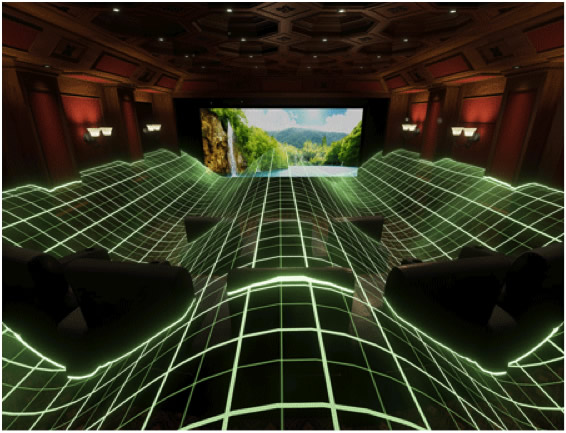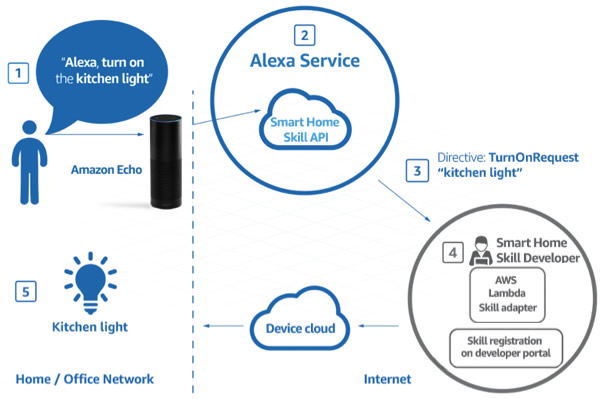 By Simon Buddle, Future Ready Homes.
By Simon Buddle, Future Ready Homes.
The tide of technology will not be halted. We are entering an age where cars will soon become driverless – Uber already has test vehicles on the road in Pittsburgh, albeit with engineers riding shotgun, for the moment.
I spent twenty minutes today walking around in a virtual world. The headset is connected to a computer so powerful that it can render the entire cinema onto the glasses every time you move your head, in under 11 milliseconds. The quality of the image meant that I could actually see the stretch lines where people had been sitting on the virtual leather seats. For the very first time I was able to walk around in that virtual space, and amazingly, they were able to turn on virtual sound waves to enable them to explain to a client about standing waves and null points etc. Oh and yes, when you put your ear into the dips in the wave, the bass diminished, and at the peaks, it increased. Impressive stuff.

I’ve been at CEDIA Expo in Dallas all week, and one particular announcement may have gone unnoticed alongside the release of the new iPhone 7 for which there is no headphone jack (really? I must be getting old). Anyway, the announcement in question was gently leaked by Amazon: Alexa is coming to Europe. October 20th is the date.
Remember when the iPad came to town? How old is it? It was launched 3rd April 2010 – just over 6 years ago, and since then, it has gone on to completely revolutionise the way in which we access and interact with the Internet. And of course, it pretty much wiped out the proprietary touchscreen, almost overnight. Six years from now, I strongly suspect that we’ll see voice control as the control interface of choice for many homes with smart devices. Apple’s iOS 10 sees the new Home App making its debut, and one suspects that Siri will be playing a big part in that too.

Controlling KNX through Voice
So what’s needed to get Alexa communicating with the blinds or lights? Well, if we choose one of the many ‘smart’ devices such as Philips Hue and EcoBee, they connect directly over the network. But to make our KNX lights work with a voice control device will require a bit more effort.
If we look at Alexa as the example, there’s a couple of things we need to know. Firstly, Alexa processes pretty much every action in the cloud, so no Internet, no control. Secondly, you’ll have to sign up to one of Amazon developer sites.
Once done, you’ll find that there are thousands of code snippets known as ‘Skills’. Creating a Skill is relatively straightforward; it lives on the Internet and is hosted as part of the AWS (Amazon Web Services). The in-home device then connects to the relevant Skill for it to interpret the commands. From here, it passes on the necessary actions to the manufacturer’s cloud service and the rest, as they say, is history.

We may need to wait a little for the cloud services to be created, but even now, we could get voice control working using either a Crestron or Control 4 processor, both of which have Alexa drivers that were being demonstrated on the Amazon booth.
The Apple Home App has unified all of the various HomeKit Apps and can be configured to process multiple actions from a single command. Sadly, Siri still seems to be a little ‘hard of hearing’. Home also runs from an Apple TV, providing a user interface on the TV. All good stuff!
Conclusion
It’s very early days for voice control, but imagine where we might be in six years from now. KNX has always excelled in the control arena, bringing together all of the facets of building controls to create a simple, unified platform for it all to work on. User interfaces haven’t necessarily been its strong point, so technologies such as Siri and Alexa will remove the need for graphical user interfaces, creating a totally new genre of UI.
These are exciting times for KNX professionals, with new opportunities and technology to get to grips with. How long will it be before we see a device that sits on the bus and Ethernet, that we can talk to? And will it be called a Dolittle? Alright. Sorry. Enough. I’m off.
Simon Buddle is a consultant for Future Ready Homes, a specialist in BMS and ELV services system design. Simon is also a regular contributor to KNXtoday magazine.











